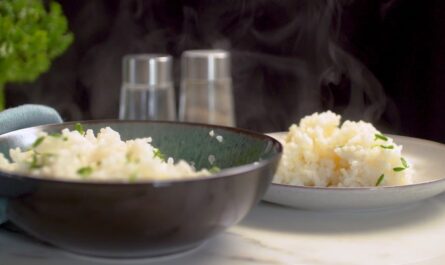Avocado sushi roll recipe is a delightful culinary innovation that combines the creamy goodness of avocados with the traditional elements of sushi. Perfect for both seasoned sushi aficionados and home chefs new to Japanese cuisine, this recipe offers a fulfilling and delicious experience. Not only is it simple to prepare, but its also vegan-friendly, making it a versatile choice for various dietary preferences.
Sushi has become immensely popular worldwide, with its health benefits and artistic presentation captivating people of all ages. One of the most adored sushi varieties is the avocado sushi roll. Avocados, known for their rich texture and high nutritional value, complement the balance of flavors in sushi rolls perfectly. In this comprehensive guide, we will explore every step needed to master the avocado sushi roll recipe, from selecting the freshest ingredients to using the proper tools.
Ingredients Needed for Avocado Sushi Roll
To make an authentic avocado sushi roll, you’ll need a selection of quality ingredients. Each ingredient plays a crucial role in creating the perfect balance of taste and texture. Below, we itemize all the essential elements, including details on where to find them and what substitutes you might consider if you can’t access certain items.
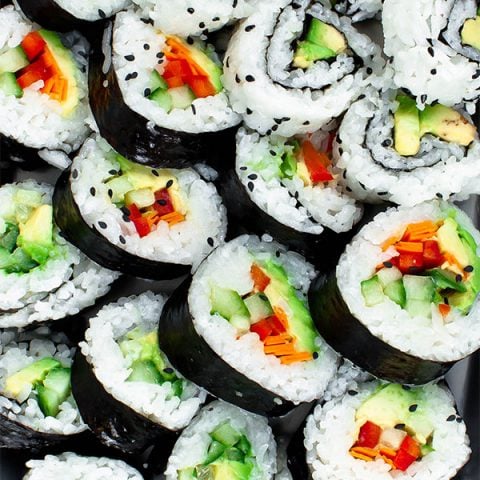
Main Ingredients
- 2 cups sushi rice (read how to make sticky rice)
- 2 1/2 cups water
- 1/2 cup rice vinegar
- 1/4 cup sugar
- 1 tablespoon salt
- 2 fresh avocados
- 1 cucumber
- Nori seaweed sheets
- Soy sauce (for serving)
- Wasabi and pickled ginger (optional)
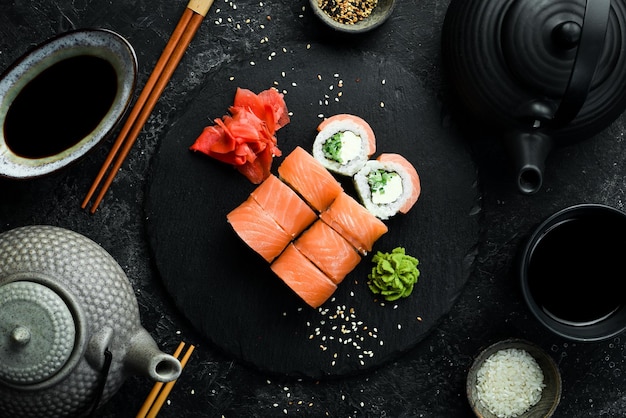
Tools You’ll Need
Selecting the Freshest Ingredients
Using fresh and high-quality ingredients is essential for making delicious sushi rolls. Begin by choosing the right sushi rice. The perfect sushi rice should be short-grain, which provides the right stickiness and texture. For detailed guidance on choosing and preparing sushi rice, refer to this comprehensive guide.
Next, we have avocados. Select ripe yet firm avocados to ensure they hold their shape well when sliced. The flesh should give slightly under gentle pressure but not feel overly soft or squishy. When sourcing cucumbers, opt for the English variety. These cucumbers have fewer seeds and a crisper texture, perfect for sushi rolls.
Nori sheets are another critical component in sushi making. Look for nori that is dark green, almost black, indicating its freshness. Avoid nori sheets that appear dull or have a brownish hue, as they may be stale.
Step-by-Step Guide to Preparing Sushi Rice
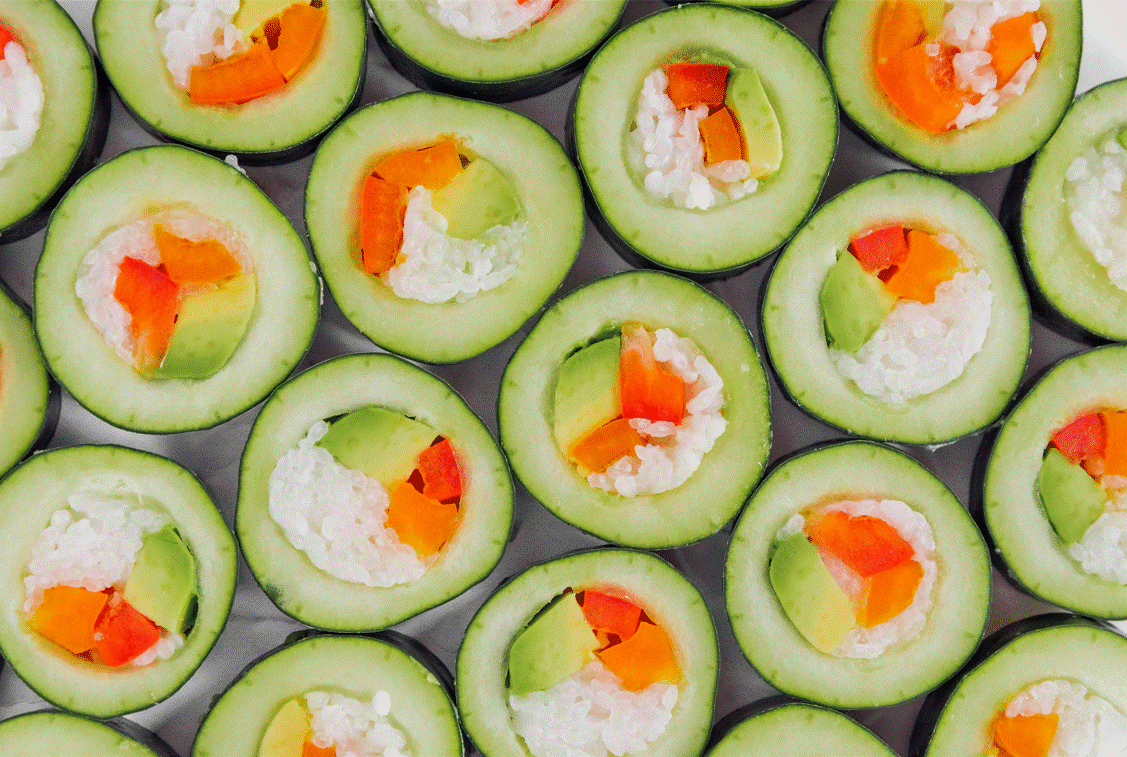
1. Rinsing the Rice
The process begins with properly rinsing the sushi rice to remove excess starch. Place the rice in a strainer and rinse under cold running water until the water runs clear. This step is crucial as it affects the texture of the final product, ensuring that the rice is not overly sticky. Let the rice drain thoroughly.
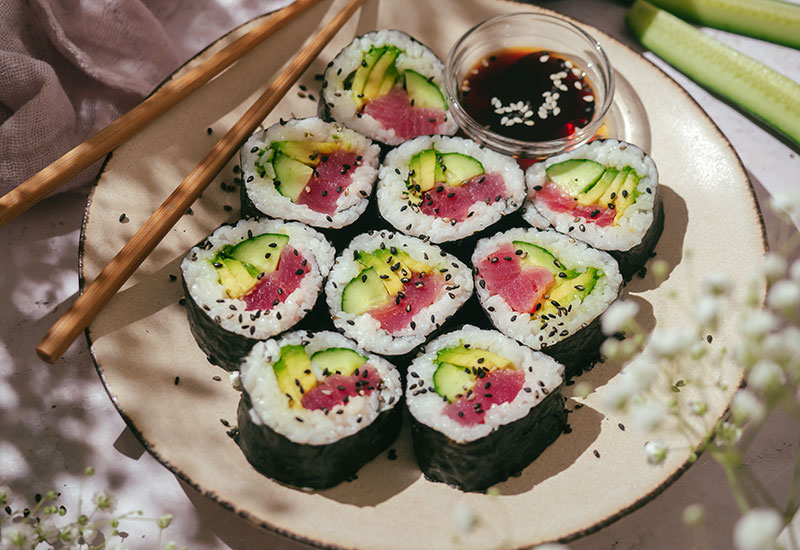
2. Cooking the Rice
Once rinsed, transfer the rice to a rice cooker, adding water in the ratio specified (2 cups of sushi rice to 2 1/2 cups of water). Let it soak for 30 minutes before turning on your rice cooker. This soaking step allows the rice grains to absorb water and promotes even cooking. If you dont have a rice cooker, a heavy-bottomed pot with a tight-fitting lid will also work for cooking the rice evenly.
3. Seasoning the Rice
While the rice is cooking, prepare your vinegar mixture. Combine rice vinegar, sugar, and salt in a small saucepan, and heat until the sugar and salt have dissolved. Once your rice is cooked, transfer it to a large, non-metallic bowl. Gently fold the vinegar mixture into the rice using a wooden spatula, taking care not to mash the grains. This step imparts the essential flavor that characterizes sushi rice. To learn more, visit this seasoning guide.
The Art of Rolling Sushi
Now that your ingredients are prepped and ready, its time to roll your avocado sushi. Sushi making is as much an art as it is a culinary skill, and with a few key techniques, you can achieve restaurant-quality rolls at home. Be patient and take your time to perfect each step.
1. Preparing the Sushi Mat
Cover your bamboo sushi rolling mat with plastic wrap to prevent the rice from sticking. This simple step can save a lot of cleanup time and ensure a smooth rolling process. Place a sheet of nori on the mat, shiny side down.
2. Spreading the Rice
Moisten your hands to keep the rice from sticking to your fingers. Take a handful of seasoned sushi rice and spread it evenly over the nori, leaving a 1-inch border at the top. Flatten the rice gently but firmly, ensuring an even layer.
3. Adding Fillings
Arrange thin slices of avocado and cucumber lengthwise along the center of the rice. You can customize your roll by adding other ingredients, such as bell peppers, carrots, or even a splash of your favorite sauce for added flavor.
4. Rolling the Sushi
Lift the edge of the sushi mat closest to you, and begin to roll it away from you, applying firm yet gentle pressure. The plastic wrap will help you keep the roll tight and uniform. Continue rolling while keeping the filling centered, making sure the edges seal properly.
5. Slicing the Roll
Using a sharp sushi knife, slice the roll into bite-sized pieces. Its helpful to wipe the knife with a damp cloth between cuts to achieve clean and precise slices. A good sushi knife is essential for this step, ensuring that you get professional-looking pieces every time.
Serving and Enjoying Your Avocado Sushi Rolls
Arrange your sliced avocado sushi rolls on a platter, garnished with pickled ginger and a dollop of wasabi, if desired. Serve with a small dish of soy sauce for dipping. The combination of flavors and texturescreamy avocado, crisp cucumber, and the umami of soy saucecreates a harmonious and delicious culinary experience.
For those interested in pairing sushi with beverages, traditional options like sake or green tea are excellent choices. They complement the sushis flavors without overpowering them. Alternatively, a light and crisp white wine can also pair beautifully with your avocado sushi rolls.
Cleaning and Maintaining Your Tools
After making sushi, taking proper care of your cookware and utensils ensures their longevity and performance. Investing in a good cookware cleaner is essential. This not only keeps your tools in perfect working condition but also ensures food safety. For wooden utensils like your cutting board or sushi rolling mat, apply a cutting board oil to maintain their durability and prevent cracking.
By following these detailed steps and tips, youll be well on your way to mastering the art of the avocado sushi roll recipe. Enjoy experimenting with different fillings and flavors, making each sushi-making experience uniquely yours.
As an Amazon Associate, I earn from qualifying purchases.
As an Amazon Associate, I earn from qualifying purchases.
——————————————————————————————————–
Disclosure: This post contains affiliate links. As an Amazon Associate I earn from qualifying purchases, but there will be no extra charges to you. Thank you for your support!




